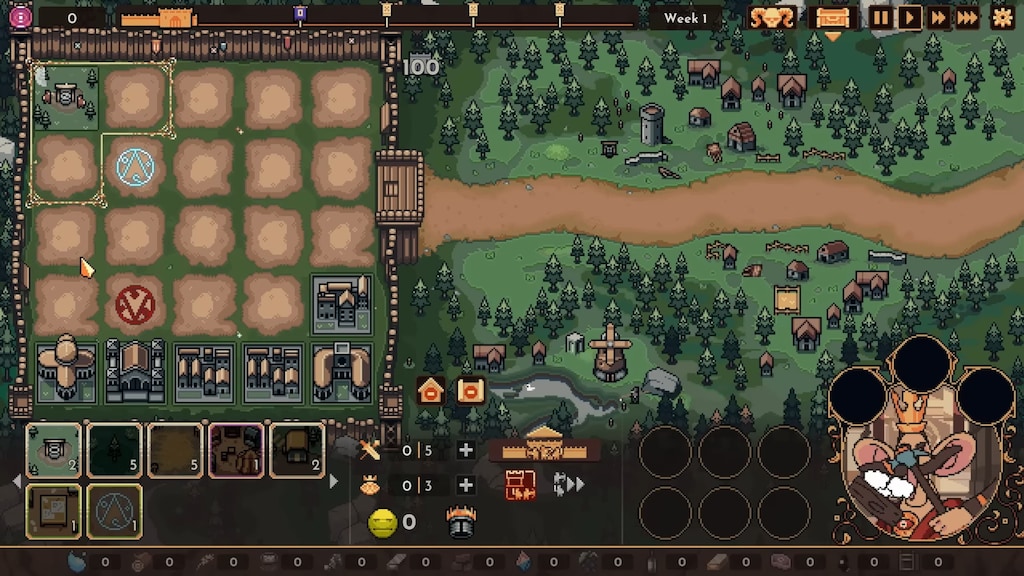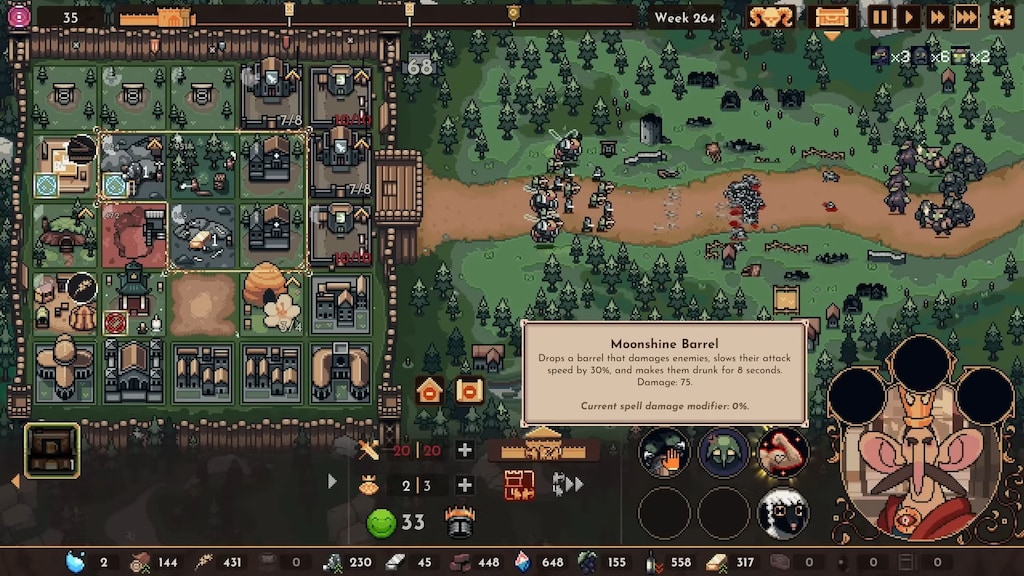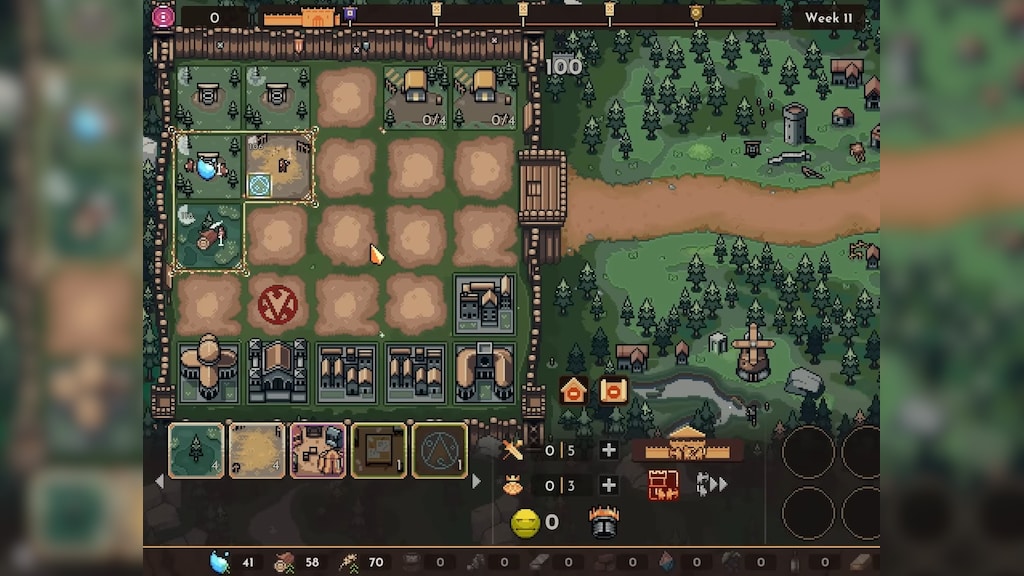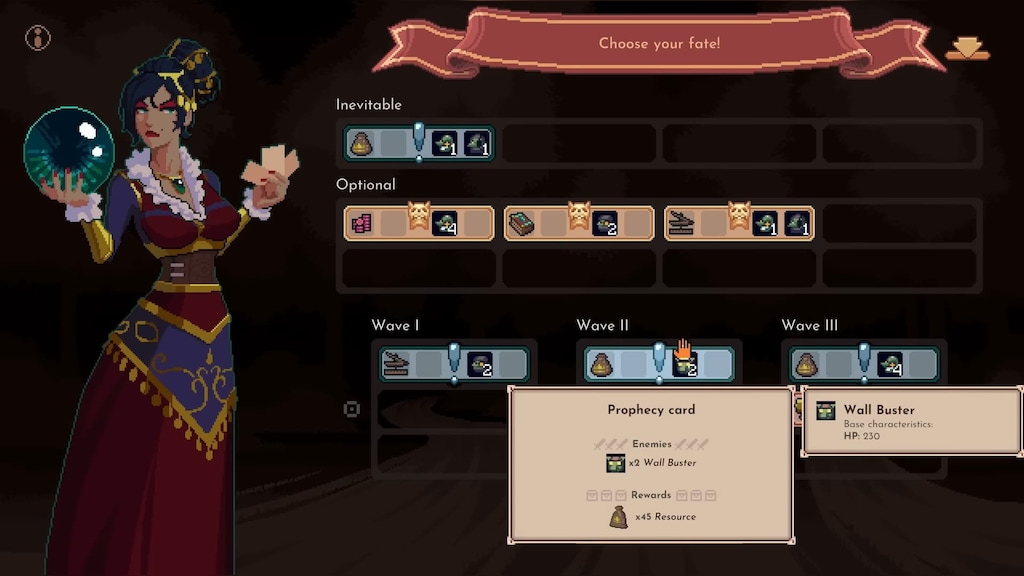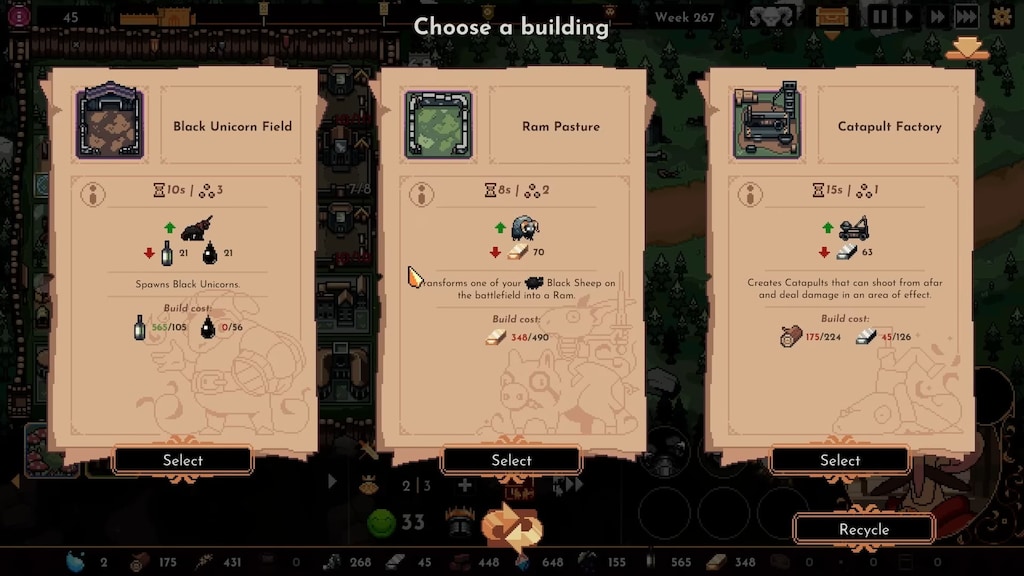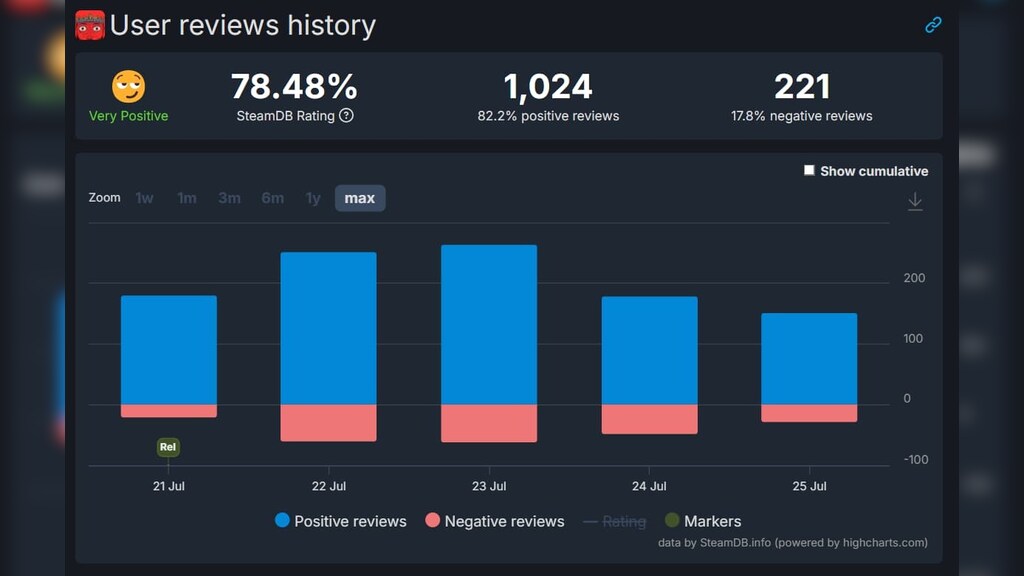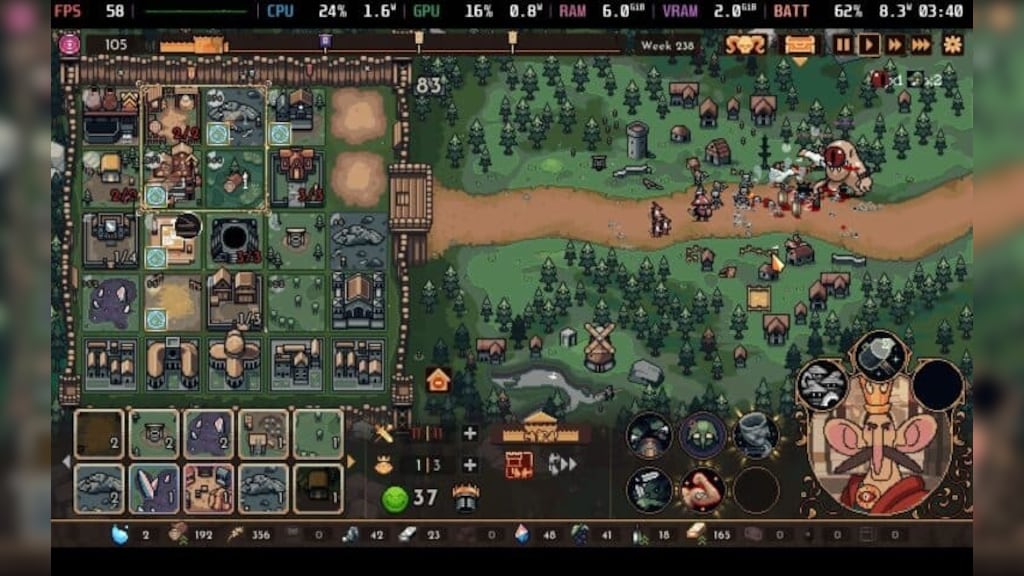The King is Watching is a new roguelike city builder with a nasty twist: your citizens are shockingly lazy. Nothing gets done unless you’re looking right at them.
Released on Steam on July 21, 2025, it quickly carved a spot for itself with an unusual blend of pressure, micromanagement, and pixel strategy chaos.
The King is Watching Review
This is not your usual chill builder. Here, production only happens in places you’re watching. That’s the central mechanic: the “royal gaze”. It starts small, letting you highlight an L- or V-shaped cluster of tiles on your castle grid. Anything outside your view is deadly silent. As you progress, you can expand the gaze to include more buildings, but attention management remains key.
You’re juggling resource buildings, barracks, farms, and magic labs while waves of goblins, orcs, trolls, and dragons pound your castle walls. It’s fast and tight and very captivating – the kind of system that makes you forget what time it is.
What You Actually Do in This Roguelite City Builder
You manage a compact grid that represents your castle. That grid fills up with production buildings like wheat farms, water pumps, stone mines, and soldier creators. Some generate raw materials, some pump out units and the others unlock magical mayhem.
You get attacked constantly, so don’t be surprised. The enemy timeline is visible at the top of your screen, and it doesn’t wait. You need archers, reinforced walls, magic spells, and well-timed upgrades to stay alive. The game lets you drag and drop AoE spells, like heals, buffs, meteors, even temporary demon summons, to help turn the tide.
Resources fuel everything: buildings, repairs, upgrades, even your gaze expansion. At any moment, you can shift buildings around or scrap them for efficiency, so no room for wasted space.
Your gaze becomes your most valuable tool. Expanding it costs resources, but it lets you keep more buildings active at once. That means more income, more troops, more firepower. The game constantly pushes you to decide what matters most, moment to moment.
Combat That Plays Itself
Once your troops are in place, they act on their own. It’s all about having the right units, in the right spot, at the right time. Your focus is on setting them up before the wave hits.
Enemy waves come with selectable modifiers and rewards, so you choose how hard you want to make it and what kind of payout you’re aiming for. Every few waves, a trader stops by, offering artifacts, upgrades, spells, and buildings.
Enemies escalate over time. You start with goblins and orcs, but later waves bring giants, siege beasts, and massive dragons. You can’t rely on one strategy for long.
Between Runs: Permanent Progress
When you inevitably fall, you take home Denarii. That’s the currency used to unlock upgrades across four trees. You can grab new buildings, recruit advisors with special perks, or unlock new kings with unique bonuses. Every run builds on the last.
You’ll explore different lands, each with their own layout quirks. Climbing through levels unlocks Ascension tiers and special crystals, which can be spent to push your build even further. Some waves offer challenges for extra crystal rewards. The more you play, the more the game opens up.
There’s also a gallery and in-game encyclopedia, for those who love tracking everything.
Upgrades stack quickly. Some give your gaze more range. Others boost your damage spells or spawn more troops. A few completely change how you approach building, like unlocking synergies or alternate unit types.
Steam Release and Reception
The game launched July 21 on Steam at $14.99, with a 10% launch discount for the first week. A demo version had already racked up over 300,000 downloads with a 96% positive rating, and now the full version holds a “Very Positive” score from 83% of 684 players.
Developed by Hypnohead and published by tinyBuild, it supports English, German, Spanish, Russian, and Simplified Chinese across interface, subtitles, and full audio. It’s bundled with titles like “Drill Core” and “Drop Duchy” in curated Steam packs.
Players appreciate how simple the controls are compared to how intense the gameplay gets. No fluff, just fast decisions and clean mechanics. The minimalist UI might turn off some, but most agree it keeps the focus on what matters.
Steam Deck Report
Runs great on Steam Deck. It hits a stable 60 FPS without needing tweaks. Battery usage is a bit high, around 10 to 11 watts, but can be optimized with a 5W TDP cap and 1000MHz GPU clock to pull it down to 8.5W and add extra playtime.
Controls work well with the touchpad and joycons mapped to mouse inputs. There’s no native controller support, but you won’t miss it. Just note that the game doesn’t support 16:10 resolutions. Cloud saves are on, but HDR isn’t.
Even with no visual settings to tweak, performance is reliable. Some players say it’s their go-to game for short play sessions. Others burn through hours without noticing. Either way, it holds up well.
Roguelite With Strategy Hooks
Every run is different. Enemy waves, random events, modifiers, and trader offerings keep things fresh. With build variety, challenge scaling, and long-term unlocks, it’s easy to fall into a loop of “just one more try.” Artifacts add passive boosts and enemy types and intensity evolve. Choosing how to invest – offence, economy, defense, or chaos – is what keeps it interesting. There’s always a reason to tweak your layout and try a new tactic.
If you want your runs to go deeper, you can raise the difficulty. Higher stakes bring better loot and more chances to push your build further. But mess up your early game, and you’ll hit a wall fast.
The King is Watching asks you to manage your kingdom not with brute force, but with sharp focus. Stop watching, and it all falls apart. It’s a tight, addictive strategy loop that’s easy to pick up and hard to walk away from. Even with a simple visual style and limited UI options, it’s one of the best portable real-time builders of the year.





